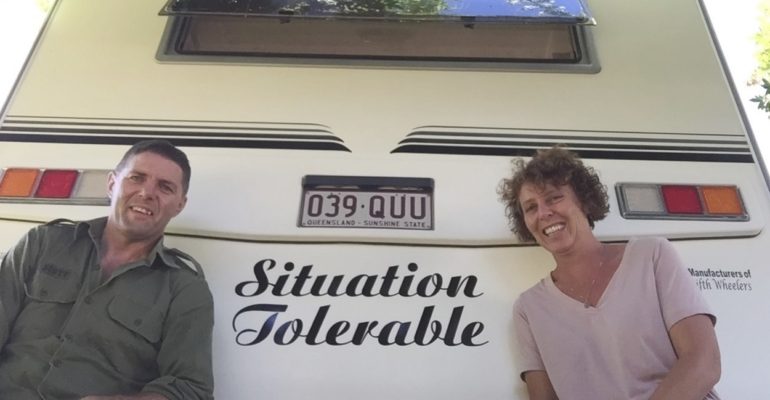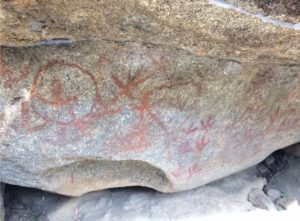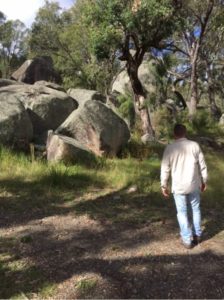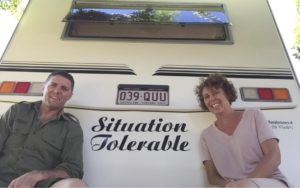

Aboriginal Rock Art at Yarrowyck Nature Reserve
Yarrowyck Nature Reserve is 30km west of Armidale and it has some Aboriginal Rock Art.
The elderly volunteer at the Armidale Tourist Information Centre told me, “it is not very spectacular but I have been told it is significant”, she did not recommend it.
Her preference was for the bus tour around town taking in the thirty or so historical sites such as Mary and Joseph Catholic Church or the World War I memorial.
Why choose the rock art?
So why did my wife and I drive 30km to see some unspectacular indigenous rock art? I had to undertake some self reflection and thought to answer that for myself.
I think the first reason was the exclusivity of the attraction. It was the only one of it’s kind in the district and punters had to drive 30km then walk 3km to see it. So it was not easily accessible and not to everybody’s taste drastically reducing the people who would make the effort to see it.
The second reason was the historical value that this art work in itself brings to a nation that has tried hard to forget and sometimes bury it’s Indigenous legacy. Rightly or wrongly, as a white Australian I do feel a sense of guilt about past atrocities and have a desire to learn more about this ancient culture; though I did wonder to myself if some people viewing the art work did so as a way of lessening the guilt.
The third reason – it was in nature and free of charge. When you are travelling on a budget “free stuff” has its own inherent beauty.

Yarrowyck Nature Reserve
The site itself has a picnic area that looked maintained although no toilet paper in the composting toilet told another tale. The 3km walk was easy and pleasant and the rock art was as unspectacular yet significant as the lady in the Information Centre had warned. And I did enjoy the experience.
One of the information signs on the trail said:
The first Commissioner of Lands in New England, G.J.MacDonald, estimated that by 1842 numbers of Aboriginal people in this region were 500-600. This is probably much less than numbers before contact due to the effects of diseases, migrations and warfare.
So after reading that I am not sure what all the debate was about on Anzac Day whether the colonial wars were wars or not. This government sanctioned plaque tells me clearly they were.
Whether on tour or in your own local area the simple act of walking in a natural environment to find something at the end of the trail is enjoyable to the human spirit.
Keeping areas of natural beauty or historical and cultural significance takes effort, passion and money. When local councils and communities choose to protect these areas they do get some economic value returned as a tourist attraction.
Is that value enough? I don’t know but I’m glad I picked the rock art and saw it while it’s still there.

Brad and Narelle Scott
Brad Scott
Situation Tolerable
Brad Scott is a Redlander currently travelling at a leisurely pace around Australia with his wife Narelle in a caravan they’ve named “Situation Tolerable”.
In 2016 Brad was The Greens candidate for the Federal seat of Bowman.
Redlands2030 – 23 May 2017
Please note: Offensive or off-topic comments will be deleted. If offended by any published comment please email thereporter@redlands2030.net
Thanks for the post Brad.
They seem to be different sort of paintings to Blackdown and Lakefield. Were there any petroglyphs like Western NSW or Kimberley type stick figures?
No petroglyphs. The paintings themselves don’t have a confirmed story. The one most favoured is that they represent the footprints of the local turkeys that are in the area and were a major food source.
Brad, when you get to the Barrup Peninsula in Western Australia – thereis a similar attitude to the rock carvings and paintings that are to be found there. You have to negotiate an unkempt dirt road past the huge gas facility – in their office there is a life size model of the work “climbing men” which is ancient and is not maintained by local Aborigines as it is not part of their dreaming. To find the actual rock, you leave your car, and wander through spinifex and climb 3 ridges then face back towards the ocean. Throughout the site, there are literally hundreds of rock etchings of echidnas, kangaroos, but this particularly one “climbingmen” is unique. Interpreted as possibly as an initiation ceremony.
Thanks Jan. I will look for it now ?